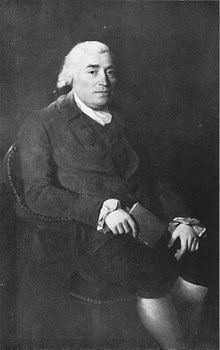Nationality British Name Thomas 6th | Occupation Estate LordBaron | |
 | ||
Known for Peer of ScotlandNorthern Neck Proprietary Role 6th Lord Fairfax of Cameron Parents Thomas Fairfax, 5th Lord Fairfax of Cameron Siblings Robert Fairfax, 7th Lord Fairfax of Cameron Grandparents Henry Fairfax, 4th Lord Fairfax of Cameron People also search for | ||
Thomas fairfax 6th lord fairfax of cameron
Thomas Fairfax, 6th Lord Fairfax of Cameron (October 22, 1693 – December 9, 1781) was the son of Thomas Fairfax, 5th Lord Fairfax of Cameron and of Catherine, daughter of Thomas Colepeper, 2nd Baron Colepeper.
Contents
- Thomas fairfax 6th lord fairfax of cameron
- Youth and early adulthood
- In North America
- The Revolution
- Legacy
- References
The only resident peer in late colonial America, Fairfax administered his vast Northern Neck Proprietary — a Virginia land grant dating back to 1649 — from his wilderness estate at Greenway Court, Virginia. Various place names in Northern Virginia and the Eastern Panhandle of West Virginia are named for him—most notably Fairfax County, Virginia.
Youth and early adulthood
Born at Leeds Castle in Kent, England — owned by his maternal Culpeper ancestors since the 1630s — Lord Fairfax succeeded to his title in 1709. He was educated at Oriel College, Oxford between 1710 and 1713 and afterward held a commission in the Royal Horse Guards (1721–1733). He was a contributor to the early newspaper Addison's Spectator.
In 1719, Fairfax came into possession of the vast Culpeper family estates in Virginia's Northern Neck Proprietary between the Rappahannock and Potomac Rivers. These lands included a great portion of the Shenandoah and South Branch Potomac valleys, in all consisting of some 5,282,000 acres (21,380 km²). Struggling to keep up an expensive lifestyle and maintain Leeds Castle, Fairfax relied on the income from his Virginia tract, both from the sale of land and the annual quit rents, paid by planters who settled in the Northern Neck. These rents were collected by his resident land agent, Robert "King" Carter (1662–1732). In the fall of 1732, Fairfax read Carter's obituary in the London monthly The Gentleman's Magazine and was astonished to read of the vast personal wealth Carter had accumulated, which included £10,000 in cash: this at a time when the Governor of Virginia was paid an annual salary of £200. Rather than appoint another Virginian to the position, Lord Fairfax arranged to have his cousin Colonel William Fairfax move in 1734 from Massachusetts to Virginia to serve as his resident land agent.
In North America
Lord Fairfax travelled to Virginia for the first time between 1735 and 1737 to inspect and protect his lands. In 1738, about thirty farms were established as part of his 9,000-acre (36 km2) Patterson Creek Manor near present-day Burlington, West Virginia. The northwestern boundary of his Northern Neck Proprietary, which had been contested by the English Privy Council, was marked in 1746 by the "Fairfax Stone" at the headwaters of the North Branch Potomac River. Returning to America in 1747, he first settled at Belvoir (present-day Fort Belvoir), an estate which had been completed by Col. Fairfax six years earlier. He then became active in developing his lands and collecting ground rents.
Fairfax was the only resident peer in North America — William Alexander's claim to be the Earl of Stirling was never fully successful and other peers held offices in the Colonies, but returned to Britain afterwards. In 1748, he made the acquaintance of George Washington, a distant relative of the Yorkshire Fairfax family who was then a youth of 16. Impressed with Washington's energy and talents, Lord Fairfax employed him (Washington's first employment) to survey his lands lying west of the Blue Ridge.
Fairfax, a lifelong bachelor, moved out to the Shenandoah Valley in 1752. At the suggestion of his nephew Thomas Bryan Martin, he fixed his residence at a hunting lodge at Greenway Court, near White Post, Clarke County. Here he and Martin lived together in a style of liberal hospitality, frequently indulging in the diversion of the chase. He served as county lieutenant and as justice of the peace for Frederick County which then included Clarke.
The Revolution
Though a frank and avowed Loyalist, Fairfax was never insulted or molested by the Whigs. His domain, however, was confiscated during the hostilities by the Virginia Act of 1779. Less than two months after the 1781 defeat of Cornwallis at Yorktown, the 88-year-old Fairfax died at his seat at Greenway Court. He was buried on the east side of Christ Church (Episcopal) in Winchester, Virginia.
